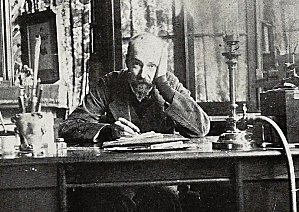Last September I wrote a review of Euan Semple’s wonderful “Organizations Don’t Tweet”. Six months on, I’m still referring to the book and finding insights that continue to delight and inspire.
Euan and I both worked for organizations that might be considered a by-word for literacy. The BBC and Reuters (now Thomson Reuters) are, after all, in the communications business. And yet, for all the front end communication goodness – in the shape of news bulletins or reports from the battlefield or even the latest stock prices from the trading room floor – in my experience at least, the back end (how apt) of the business encouraged illiteracy across great swathes of the organization.

I don’t mean we were discouraged from reading. There was, indeed, probably way too much information available for reading on a daily basis. On the whole, though, much of this excess information was of little relevance. And, if it was relevant, it tended to be written in a style and format that stood between the reader and the key information.
(A disclaimer, of sorts: I last worked at Reuters some years ago. It is a company I held in high regard, despite the issues of its internal writing standards. In its latest incarnation it may very well be a paragon of the literate organization.)
But reading is only one half of literacy. Writing was always seen as best left for the experts. This appears to be the norm for organizations – especially large organizations. As Euan says in the book at the foot of page 40,
We have professionalized communication and taken it away from the ordinary manager or member of staff.
If anything had to be written for work, there were templates and document titles to use. God forbid that you might create something new. Or useful. And watch the language. In addition, the templates tended to be specific to individual departments, so any chance of breaking down internal silos and sharing knowledge more widely was slim.
In the chapters ‘Literacy Re-discovered’ and ‘Mass Illiteracy’, Euan describes the potential inherent in social media to change that norm. However, when he asserts that writing on the web has the potential to persist and that what “you said last week and last year will still be visible online and you will have to take this into account”, I feel he describes a problem rather than a solution.
This fear of committing to a digital permanence is every bit as scary as the traditional fear of the page. Couple this with the passionless and downright deadly dull business writing that most staff are forced to read on a daily basis and it is no surprise that most employees run screaming from the thought of writing more of the same. When your model is so poor, it is hard to see how to overcome it or head off in new directions.
I agree with Euan that the new social tools can make writing more immediately effective and will go some way to making redundant the old metaphor of the document but I think there is a stage prior to this that businesses need to make happen. It is perhaps a bit of a chicken and egg situation: employees are wary of writing because of the perceptions surrounding writing in the business but can only discover the true benefits of writing by doing it.
Any business that wishes to embrace fully the benefits of better communication – better business, in other words – can either wait for a new generation comfortable with widespread use of the social tools to come into the workplace or it needs to dismantle the obstacles that it places in the way of its employees writing.
Which option will your company choose?
[…] See on http://www.grahamdstewart.com […]